Site menu:
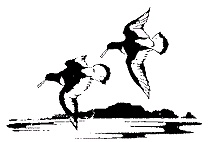
November 2012 Newsletter
DEVW and the West Kirby Roost.
Volunteers wanted for new Point of Ayr Hide.
October Bird News.
Forthcoming Events.
Latest Newsletter.
Dee Estuary Voluntary Wardens and the West Kirby High Tide
Roost.
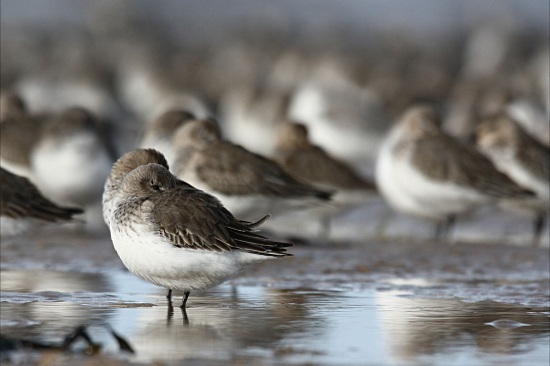
The winter of 2011/12 was the 26th that the Dee Estuary Voluntary
Wardens have been wardening the shore at West Kirby to protect the
important high tide wader roost there, the longest running scheme of
its kind in the country. The more help we get the better the birds are
protected, so if you are interested in becoming a voluntary warden
please ring the Coastal Rangers at Thurstaston on (0151)
648 4371. We are down at every daylight high tide over 8.8 metres
between mid-September to mid-March, the wardens are a friendly lot and
we have people who range from complete birdwatching
beginners to
keen twitchers; how much you warden is completely up to you but
typically it will be one or two times a month. Our main job is to try
and stop disturbance by talking to the general public, and we also
monitor the birds by doing counts. We are supported by Wirral Borough
Council/Wirral Ranger Service and the scheme was originally set up with
the help of the RSPB and what was then called the Nature Conservancy
(now English Nature). Please
help if you can.
Feel free to come along and say hello, we will usually be halfway between the north end of the Marine Lake and Red Rocks but best to check what time we are on duty by ringing the above number.
Over the 26 years of wardening we have amassed a large volume of data, this includes recording the amount of actual disturbance versus potential disturbance - mainly caused by walkers and their dogs with problems also with horse riders and windsurfers, among others. We have been successful in bringing down actual disturbance to around 1% of the potential disturbances, despite a large increase in beach usage (see November 2000 Newsletter for more details).
Counting birds is also a
way of measuring our effectiveness as wardens, and it is particularly
pleasing to have seen numbers of Curlew and Oystercatchers steadily
increasing over the past few years so that West Kirby is now one of the
main roost sites in the estuary for these species with up to a third of
the estuary's Curlew and up to half the Oystercatchers
roosting here (see
graphs below). It was particularly noticeable over the past couple of
winters how these birds usually spend the whole of the high tide at
West Kirby rather than moving on to other sites, they wouldn't do that
unless they felt safe here - thanks to the wardens!
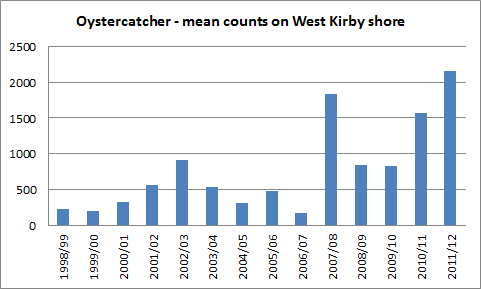
max count in 2011/12 was 10,150.
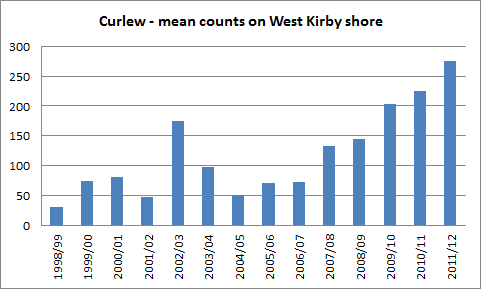
max count in 2011/12 was 1,000.
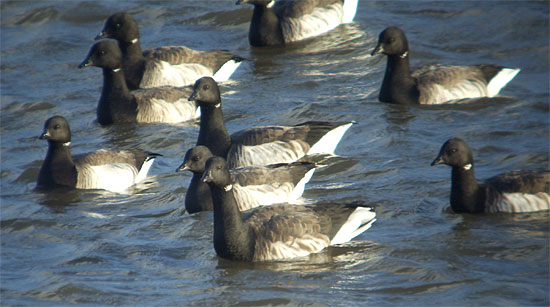
I hope I have convinced you that West Kirby is a great place to
birdwatch whilst doing important conservation work - hope to see you on
the beach this winter.
For more information about the wardens
and the birds of West Kirby Shore click on the links below:
1. Wirral's Wonderful
Waders.
2. West
Kirby High Tide Wader Roost 2010/11.
3. West
Kirby High Tide Wader Roost (includes details of trends in wader
numbers).
4. Dee
Estuary Voluntary Wardens at West Kirby (article published on the
occasion of our 20th anniversary).
5. Dee
Estuary Voluntary Wardens.
NOTE: All
data shown was obtained by, and belongs to, the Dee Estuary Voluntary
Wardens, none of this data may be used without their permission.
Many
thanks to all the many wardens who have collected this data over the
years and, in particular, Roy Palmer who compiles it all onto
spreadsheets and draws up various bar charts every year, two of which
are shown here.
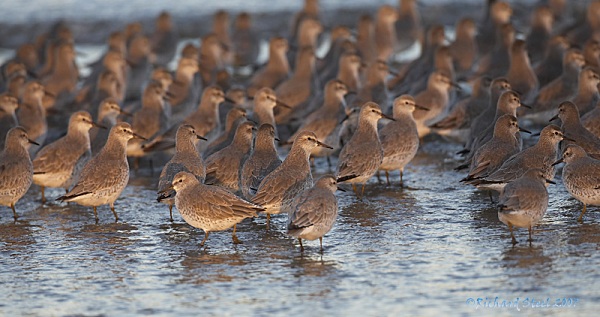
The Dee needs you: volunteers wanted for new hide
Top of Page
Volunteers Wanted for New Point of Ayr Hide
The hide, on the Dee Estuary, replaces the original which sadly had to be demolished in 2008 due to excessive and mindless vandalism. But nature lovers will once again be able to enjoy the sights and sounds the reserve has to offer, and the RSPB is inviting people to help celebrate its launch with a free open day on Saturday 3rd November.
Austin Morley, a volunteer at RSPB Dee Estuary said: “It was a huge shame when the old hide was damaged beyond repair. We really hope people will come forward to help us keep the new hide in prime condition and preserve it for future generations.”
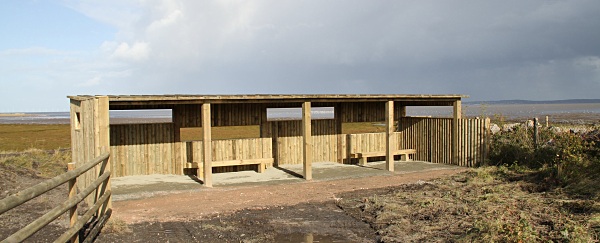
Also see video shot in and around the hide - Click Here.
During the celebration day there will be a free guided walk (starting at 10am), followed by an official opening ceremony. Geoffrey Robinson, RSPB Assistant Warden, said: “It’s always really satisfying to see people of all ages getting close to nature and seeing wildlife they may never have come across before. This new facility will allow exactly that to happen.”
Point of Ayr is accessed off Station Road, in Talacre, and is just 10 minutes from the A548.
For more details or to volunteer to help, email deeestuary@rspb.org.uk or visit www.rspb.org.uk/pointofayr.
Top of Page
October Bird News
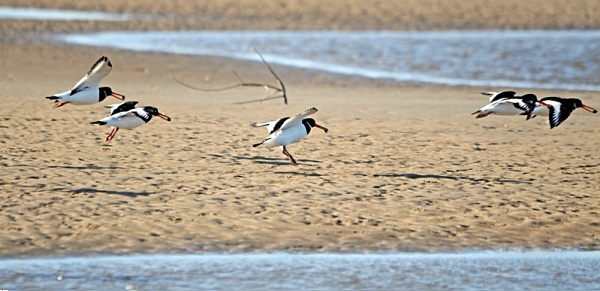
May be it's just me but I thought it was a bit of a strange month - plenty of Visible Migration but not much of the species we would normally expect; good number of rarities but hardly any twitchable ones; no gales to speak of but still plenty of birds on the sea; conditions perfect for a huge tide at Parkgate yet it only just made it to the wall; Brent Geese in numbers about double the previous record for this month.......
According to BirdTrack there was a large influx of Jays into the country and we saw more than usual here at the usual Visible Migration sites, although these were likely to have been local dispersing birds rather than foreign immigrants. Four Jays at Leasowe Lighthouse on on the 7th doesn't sound like much but one is very unusual here. Larger numbers were at Red Rocks with 22 on the 6th and 17 on the 8th. Other corvids were on the move including 31 Magpies and 120 Jackdaws over Red Rocks on the 9th whilst 500 Jackdaws following a farmer's tractor at Thurstaston on the same day must have included many migrants. Three Ring Ouzels were at Red Rocks on the 19th with one at Leasowe Lighthouse on the 25th. The best day for winter thrushes was on the 26th when about 950 Redwings and 450 Fieldfares were the totals flying over Leasowe Lighthouse and 2,965 Fieldfares were over Red Rocks.. The climax came on the 29th at Red Rocks with an estimated 47,250 Starlings, 3,940 Chaffinches and 73 Bramblings over. One of the Starling flocks was 5km long!
Rarities included a Long-billed Dowitcher at Burton Mere Wetlands, three Common Cranes and a Temmink's Stint on Burton Marsh, a Red-throated Pipit overhead at Leasowe Lighthouse and a Spotted Crake at Parkgate. A 'probable' Pallid Hen Harrier probably wasn't although it caused some excitement for a few days.
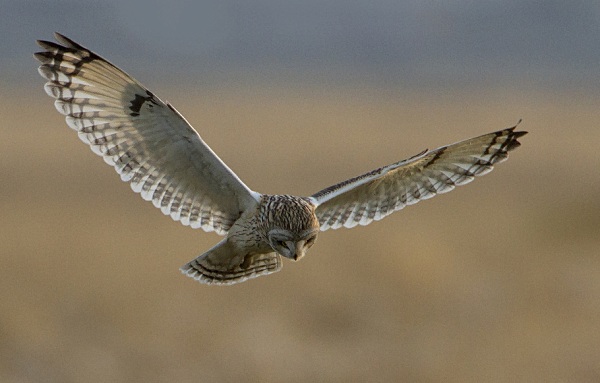
Up to two Marsh Harriers and three Hen Harriers have been on the marshes. The high tides mid-month saw five Short-eared Owls and a Water Rail at Parkgate, plus two Great White Egrets with a reliable report of three on the 16th. Still weather on the 21st brought out 10 Short-eared Owls over Burton Marsh with three very close to Denhall Quay giving wonderful views. A juvenile Hobby was at Burton Mere Wetlands throughout the month, very late for this species and the record for October 31st equals the latest ever for Cheshire and Wirral.
A flat calm during clear weather resulted in a count of 847 Great Crested Grebes, 750 Common Scoters and 25 Red-throated Divers off Hoylake on the 20th. There were good numbers of Black-tailed Godwits on the estuary with 3,000 on Oakenholt Marsh on the 14th the highest count.
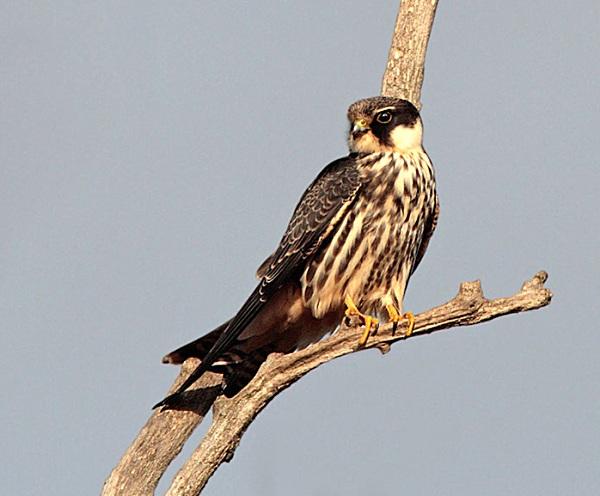
What to expect in November
During the last three Novembers there have been prolonged periods of southerly winds and as a result we saw good numbers of Gannets and skuas - unusual for so late in the year. There should also be good numbers of divers and grebes, particularly Great Crested Grebes which can reach over 1,000 off north Wirral but you need a flat calm to see them. The Dee Estuary now has the second highest number of Cormorants in the UK (a statistic not welcomed by everyone!) and they peak around this month making for a spectacular sight either flying or sat on sand banks drying their wings, expect over 1,000.
Wader numbers, particularly Dunlin and Knot, will build up rapidly and we can get some spectacular high tide roosts at Point of Ayr, West Kirby and Hoylake. Purple Sandpipers will be back in good numbers, during the mid-month high tides take a look at the wader roost on New Brighton Marine Lake where there could be as many 20.
We may get a small flock of Snow Buntings, look on the beaches at Gronant, Point of Ayr and Thurstaston, and there are often one or two somewhere around the Red Rocks, West Kirby, Little Eye and Hilbre area. If we get really lucky we may get a Shorelark or two. A flock of Twites is usually to be seen around the Flint Castle and Oakenholt area, and more rarely elsewhere.
On the marshes Short-eared Owls will be viewable, best seen during still afternoons at Burton Marsh, or during the high spring tides at Parkgate. We should also get four or more Hen Harriers which can be seen coming in to the roost at Parkgate (see the RSPB Skydancers events below).
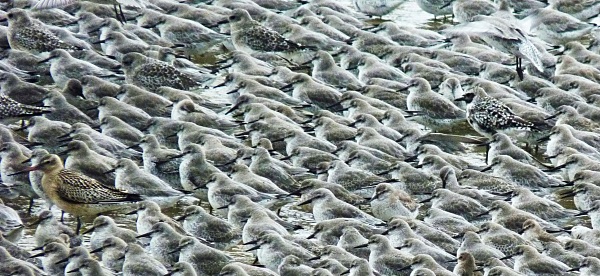
Forthcoming Events
November Highest Spring Tides (Liverpool)
Also
see Tides
page.
14th November, 10.48hrs (GMT), 9.9m.
15th November, 11.34hrs (GMT), 10.0m.
16th November, 12.21hrs (GMT), 9.9m.
Forthcoming Events
Organised by the Wirral
Ranger Service , Flintshire Countryside Service and/or the
RSPB:
All these events and walks have bird interest, even those not
advertised specifically for birdwatching. No need to book for these
events unless specified - please check below.
Also see 2012 Events Diary.
Join us for the official opening of the new hide at Point of Ayr, Talacre and take part in a free guided walk.
The Point of Ayr affords great views over the Dee Estuary and beyond. Whilst the addition of the new hide gives up-close views of thousands of birds as they are pushed in by the rising tide.
Refreshments will be available.
Also see video shot in and around the hide - Click Here.
Sunday 4th November and Sunday 2nd December:
Skydancers at Parkgate - 12 noon until dusk.
Skydancer is an exciting new four-year project aimed at raising awareness and promoting the conservation of hen harriers in the north of England.
The Dee Estuary is a vital wintering ground for these amazing birds and is the best place to see them from October through to March.
Most people have never seen a hen harrier, but once seen it is rarely forgotten. This bird is a beautiful, agile hunter, and its aerobatic sky dances are among the most awesome spectacles in nature.
Unfortunately, with only a handful of pairs still breeding successfully in England, the hen harrier is currently a species on the brink.
Come along to Parkgate to find out more about the hen harrier story and what you can do to help save hen harriers before it's too late!
Look for the RSPB Love Nature marquee along the main promenade at Parkgate where friendly staff and volunteers will be with telescopes and binoculars plus family activities, free information and more: http://www.rspb.org.uk/skydancer/
Directions: The "Donkey Stand" opposite Nicholls Ice-cream shop on The Parade (B5135), Parkgate, Cheshire.
Thursday November 15th 9.30am start, Riverbank Road Raptor Roadshow, Lower Heswall.
Join the Rangers, the Friends of Wirral Country Park and other local groups at Riverbank Road car park in Lower Heswall. The highest tide of the month will flood the marshes flushing wading birds and small mammals from cover. This will alert raptors such as Hen Harriers and Short-eared Owls wintering on the marsh to the possibility of an easy meal. Warm waterproofs and binoculars are recommended.
No need to book, meet at Riverbank Road car park, Lower Heswall.
For more information: (0151) 648 4371.
NOTE: The two events below on Nov 17th could be easily combined.
Saturday November 17th 9.30am start, Pintails of the River Dee, Thurstaston Shore.
The Dee estuary is most important wintering site in the U.K. for these elegant ducks. Join the Rangers on a guided walk along beach from the Visitor Centre as the tide rises. We will see them feeding in the channels that criss-cross the mudflats then they will join with the other ducks and waders to roost in marsh at high tide.
Warm waterproofs and strong footwear are recommended. Bring binoculars if you have them. No need to book, meet at the Visitor Centre, Station Road, Thurstaston. CH61 0HN For more information: (0151) 648 4371.
Saturday 17th November, start at 11am, High tide Birdwatch at King’s Gap, Hoylake.
You will discover why Wirral’s foreshore is an internationally protected site when you join the Dee Estuary Voluntary Wardens, Coastal Rangers and the RSPB on this winter birdwatch at Hoylake. Dress warmly and bring binoculars if you have them.
No need to book. Organised as part of Wirral’s Year of Coast and Countryside. High tide at 1.09pm, 9.7m.
No need to book. Ring 0151 648 4371 for more info.
Saturday December 15th, 9am start.
Estuary Watch: High tide from Heswall Fields.
Join the Rangers at the Thurstaston Visitor Centre for a walk down to the cliff top at Heswall Fields. Here we have a “birds-eye” view over the mudflats and into the creeks that make up the Dee estuary. As the tide rises many thousands of wading birds and ducks will be forced into the open where we can get great views of these special birds.
Warm waterproofs and strong footwear are recommended.
Bring binoculars if you have them. No need to book, meet at the Visitor Centre, Station Road, Thurstaston. CH61 0HN. For more information: (0151) 648 4371.
Saturday December 15th 2 - 3pm
2012 Year of Coast & Countryside in Review - Thurstaston Visitor Centre.
This is a slideshow and talk in the lecture theatre at Wirral Country Park to chart the wildlife seen during the events run by the Rangers as part of Wirral’s Year of Coast & Countryside. It will also give you an idea of where and when to see some great wildlife in 2013.
Places are limited so book early! Call (0151) 648 4371 to reserve a place.